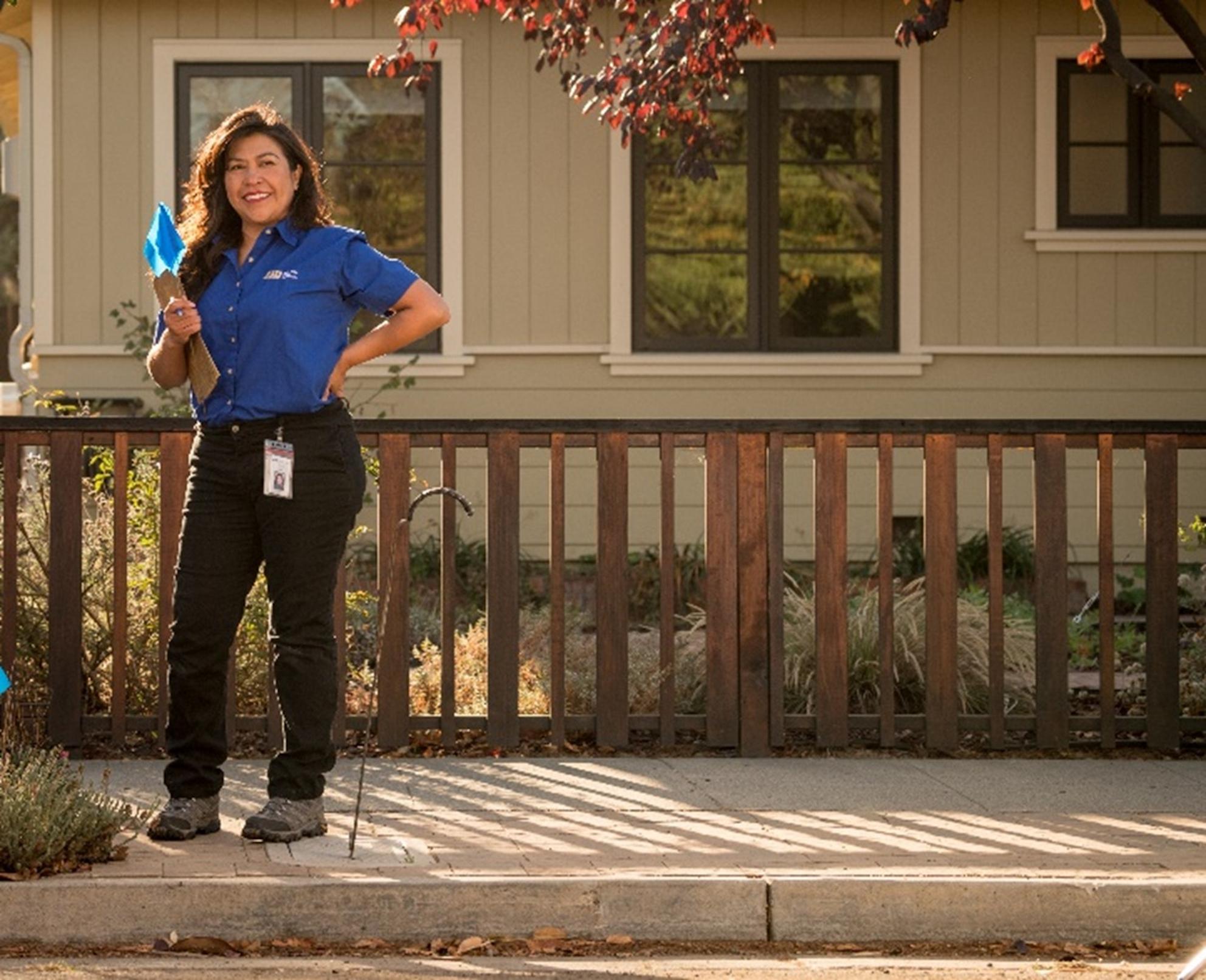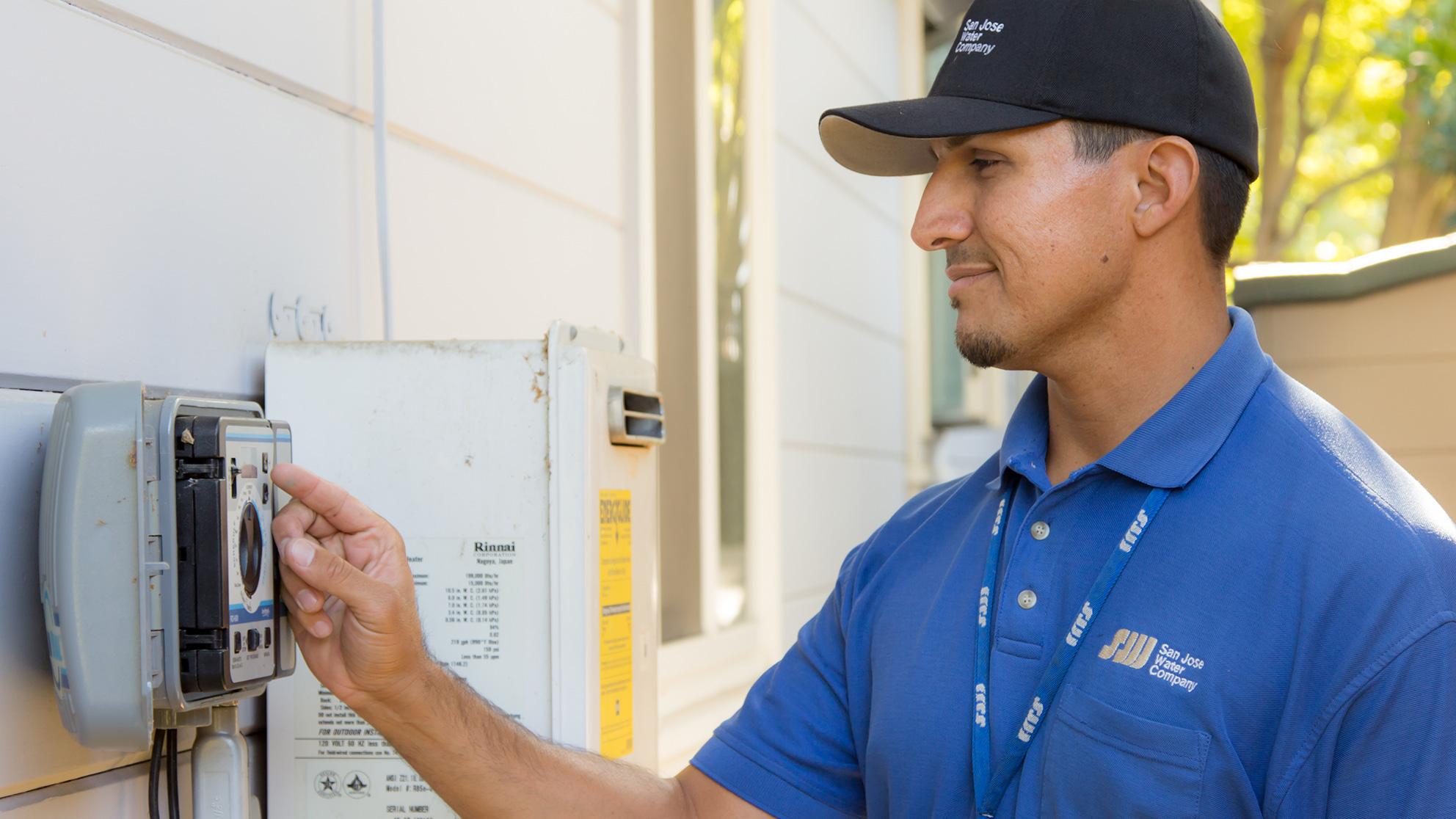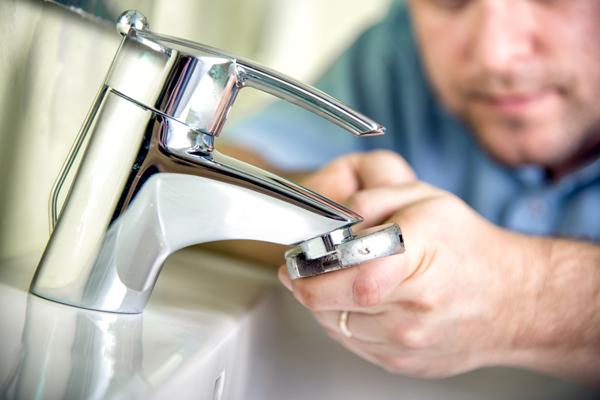Are Leaks Driving Up Your Water Usage?

When it comes to water usage, sometimes even the most conscientious residents can be wasting water and running up their water bill without knowing it. That’s because leaks can occur in a home without residents ever being aware of them.
Leaks cause the average American home to lose nearly 10,000 gallons of water every year, according to the U.S. Environmental Protection Agency. That’s equivalent to the amount of water usage the average family goes through in a month. Some water leaks are slow and difficult to detect, yet even the smallest leaks can add up quickly. Fortunately, if you know how and where to look, most leaks are easy to find.
Detecting water loss
The first step in determining if your home has any leaks is to locate your water meter. Most residential meters within the San Jose Water service area are located in a concrete box near the front curb. The next step is learning how to read the meter.
SJW’s water meters are called “straight read” meters and resemble a car’s odometer. The digits are read left to right. You can disregard the two black numbers on the right because they measure in units less than 100 cubic feet (you are billed for every 100 cubic feet of water used, which also equates to 748 gallons). The sweep hand represents water being used. It is also used when checking for leaks. One revolution of the sweep hand equals one cubic foot, or 7.48 gallons, of water usage. You can also learn how to read your meter by watching this video.
Once you know how to read the meter, you can conduct the following leak detection test if you think you have a leak:
- Turn off all water inside and outside; make sure no water is being used during the test period.
- Read the meter (left to right). Mark where the sweep hand is located on the meter.
- Wait 15 minutes and see if the hand has moved. If the hand has moved, this is an indication that water is being lost somewhere (a leak).
- You can also look at the small red or black triangle on your water meter. If all the water is turned off at your property and you notice that the triangle is moving, this indicates water usage and that you may have a leak.
Finding the leaks
If your leak detection test indicated a problem, you will need to determine whether the source of the leak is outdoors or indoors. When looking outdoors for a potential leak, your inspection should include the irrigation system, the swimming pool or spa (if any) and any fountains on the premises. When looking for leaks inside your home, make sure your inspection includes toilets; faucets; showerheads; bathtubs; water supply lines, valves and corrosion; and water softeners. Smarthomewaterguide.org has great information about how to perform indoor and outdoor inspections in your own home.
Be advised that leaks that go unattended could account for expensive water bills and could potentially cause property damage. Leaks account for about 10% to 15% of water use for an average home. Outdoor irrigation leaks alone can result in a water bill that is significantly higher than what you normally would pay.
CATCH Program

If you’re concerned that your home may be experiencing a water leak, need help learning how to read your meter or want to know where your shutoff valves are, San Jose Water can help. Our CATCH Program offers water efficiency checkups to single-family, multi-family and commercial customers.
To protect both employees and customers during COVID-19, our water efficiency experts will not enter your home. All contact with you will be done by phone.
During the checkup, a water efficiency expert will:
- Check hoses, pools, fountains and ponds for leaks
- Read the water meter to determine possible leaks
- Evaluate water usage for patterns and estimate consumption for the current billing period
- Review irrigation schedules and make recommendations, if needed
- Check for broken sprinkler heads and excessive runoff
At the end of the checkup, we will provide additional conservation tips. We will also make referrals to other programs, if applicable. SJW’s conservation experts are ready to help you use water more wisely by:
- Surveying outdoor water use
- Providing complimentary low-flow faucet aerators and showerheads (if needed)
- Offering landscape water use evaluations
- Recommending an irrigation schedule
- Assisting with the programming of your irrigation controller (if needed)
To schedule your free, contactless CATCH Program checkup, please contact SJW’s Customer Service Department at (408) 279-7900.
